There is an inverse relationship between trends and originality and leaning too much in either direction means running the risk of becoming obsolete: a person can either succumb to the pressures of conformity, forfeiting one’s point of view along the way, or lose relevance to a world that demands constant negotiation.
NAVIGATING THE FINE LINE BETWEEN AUTHENTICITY & COMMERCIAL APPEAL
When asked what I do for a living, I say that I am a “fashion designer.” On most occasions, the words have barely escaped my lips when my new acquaintance has already perked up. I can almost see the image they’ve conjured up, and it is far more enviable than the one I live out each day.
I imagine that it has something to do with the picturesque editorial spreads that encompass the holy trinity of high fashion: beauty, fantasy, and exorbitant price tags. These are not my usual wares. What most people don’t realize is that the fashion umbrella is all-encompassing, that outfitting the masses is typically more lucrative than catering to the whims of the rich and glamorous. And while my days are spent sorting through fabrics, sketching garments, and emailing our factory in China, my world is also an amalgam of passing trends and consumer buying habits. I may not be responsible for the taste level of America, but I must always bear it’s standards in mind.
When it comes to inhabiting the mind of the face-less consumer, the prevailing attitude is to determine the trend of least resistance and then “emulate” it post-haste and without question. It probably has something to do with the reverence our country has for the democratic process, asking for a show of hands before making any important decision. If you’ve ever wondered how the same silhouette, color, and design details, show up as recurrent themes across different price points and competitive brand lines, it is the result of a sartorial arms race. Timing is essential, knowing when a particular look will make its way through the different tiers of the marketplace. Staying on target with any measure of consistency takes a keen eye and an intuitive sense of one’s customer. Showing a trend too early can be just as detrimental as missing the boat entirely. So after much observation, consideration, and design related debates, we are finally ready to unveil the next evolutionary phase of career apparel for the modern woman.

This seminal moment happens during market week. We try to offer the right mix of forward styling with recycled elements from season’s past to maximize the potential of best-sellers. It is a fine line that we tread, between the comfort zone of consumers and whetting their appetites.
While trends are often associated with fashion, they are not exclusive to it. They also refer to the rise and fall in popularity of people, places and ideas. We are currently living in the brave new world of social media and given the choice between Facebook, Instagram, and LinkedIn, I have drawn the line a few hash-tags shy of Twitter. My first response is not always best and I have no delusions that three hundred of my closest acquaintances care to read about my latest bout with hypochondria. That being said, there are people far more popular than I whose purchasing habits can inspire the masses and motivate captains of industry.

Source: Wikimedia Commons
Despite all of its glib one-liners and potential gaffes of the “speak before you think” variety, Twitter has emerged as a force to be reckoned with. It is one of the few places where “viral” actually has positive connotations. Shameless self-promotion aside, these digital forums provide individuals and business with a means of driving traffic to their products in a way that can prove meaningful. And while the origin of a trend is often obscure, the constant trading of information means that they can now spread at the speed of the sudden impulse. But whether trends are incubated or evolve organically, they have a tendency to cut large swaths of the populace from similar cloth.
Some trends have mysterious origins, such as the faux-mustache which has gained traction as a party favor and fashion accessory. It is one trend I don’t particularly understand but can only assume that for most women it is meant to be ironic. For my generation, the need for hair removal has reached a fever pitch in recent years. Between shaving, waxing, sugaring, threading and lasers, the only place hair seems to be desired is when it grows from the scalp.
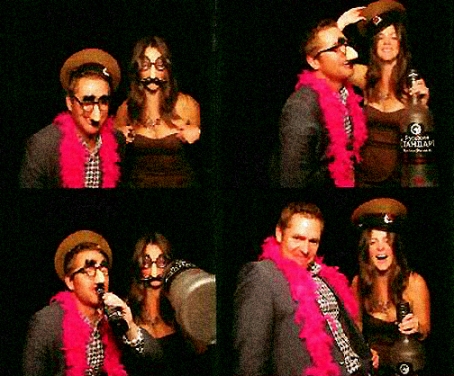
Tune into the world of film & television and you’ll see a proliferation of bad behavior, crime & hospital dramas, singing competitions and fantasy of every sort: vampires, witches, zombies, dragons, fairy tales, and the occasional super hero. But perhaps one of the biggest trends in the current climate of “too much information” is relentless critique. The back-biting and snarky comments that once had to be shared person-to-person are now part of the public domain, with the fiercest witch-hunts manifesting out of what often seems to be thin air. And the more famous someone is, the greater their risk of inspiring hatred and verbal tirades. Ancient civilizations would sacrifice animals, people, and sometimes even their kings, and we have media outlets that scourge the stars.

My guess is that it is a reaction to the charmed lifestyles that celebrities often seem to lead. They fib their way into the hearts of the average person by pretending to be just like us when they are anything but. The result is a disconnect between characters that are relatable and the starlet who is airbrushed, styled, and coiffed, into standards of impossible perfection. An actress who is quirky, offbeat, or just a few feet away from center stage may never reach “It Status,” but she also has a greater chance of emerging unscathed. If we have learned anything from the E! Channel, it is that what this attention really does is lay the groundwork for a very public and nasty tumble off the pedestal. And if an idol does not destruct of her own free will, there is always someone standing-by, waiting to lend a claw. Social media provides the public with an open forum and the masses have become adept at using it. The ability to post comments from the safety of one’s home emboldens people to say things they might otherwise have to think twice about.

In this business of trend trafficking, where the number of followers and likes can be exchanged for actual currency, I am reminded of “The Fountainhead” by Ayn Rand. It is an epic novel that follows the life and loves of Howard Roark, a “prime mover” in a secondhand world. He is an architect whose devout-like reverence for his own creative process is his greatest asset, while others conspire against him at every turn. As a manipulator of raw space he does not adhere to any formula and feigns willful ignorance to the conditioned responses of those around him. The site and purpose of a location are his foremost considerations in the design process. He treats every project and seed of an idea as unique, often causing offense to those at the forefront of popular sentiment. He is a man ahead of his time, rejecting gratuitous ornamentation for the elegance of cleaner lines. What his contemporaries consider classic he views as an impediment to the most essential desire of the soul.

“The purpose, the site, the material determine the shape. Nothing can be reasonable or beautiful unless it’s made by one central idea, and the idea sets every detail. A building is alive, like a man. Its integrity is to follow its own truth, its one single theme, and to serve its own single purpose. A man doesn’t borrow pieces of his body. A building doesn’t borrow hunks of its soul. Its maker gives it the soul and every wall, window and stairway to express it…Why is it so important–what others have done? Why does it become sacred by the mere fact of not being your own? Why is anyone and everyone right–so long as it’s not yourself?”
– Howard Roark
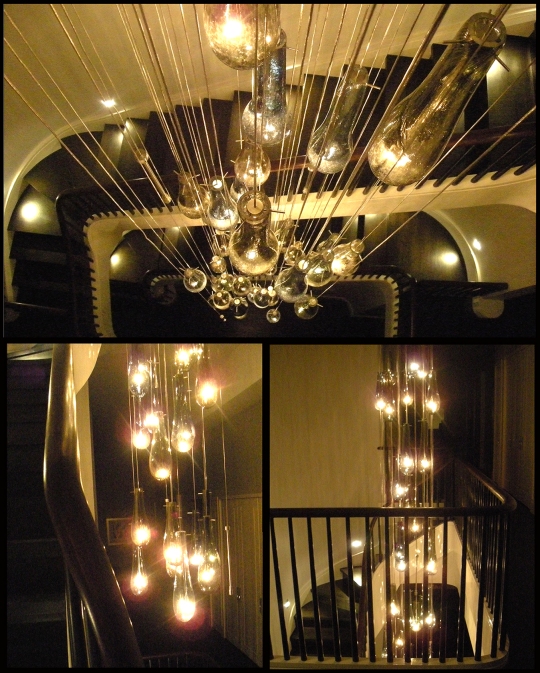
For inquiries, the New York based architect (Michael Rabin not Howard Roark) can be reached at MRabinArch@aol.com
In stark contrast to Roark’s aggressive idealism, Gail Wynand is a powerful media tycoon and owner of “The Banner,” a paper that appeals to the lowest common denominator. Rand preps the reader to thoroughly despise Wynand until she deftly executes a bait and switch, imparting a surprising humanity to the larger-than-life persona. It happens gradually, first with an unlikely friendship between the sometime foes, and builds up to a confessional moment and peek beyond the million dollar brassiere.
“The public asked for crime, scandal and sentiment. Gail Wynand provided it. He gave people what they wanted, plus a justification for indulging the tastes of which they had been ashamed. The Banner presented murder, arson, rape, corruption—with an appropriate moral against each. There were three columns of details to one stick of moral. “If you make people perform a noble duty, it bores them,” said Wynand. “If you make them indulge themselves, it shames them. But combine the two—and you’ve got them.” He ran stories about fallen girls, society divorces, foundling asylums, red-light districts, charity hospitals. ‘Sex first,’ said Wynand. “Tears second. Make them itch and make them cry—and you’ve got them.”
– excerpt from “The Fountainhead”
So while The Banner is busy masquerading as a proper news outlet, it is actually screen onto which the public can project their desires, watch them unfold and then cry out against indecency.

It is this eleventh hour admission that suddenly transforms Wynand from a despicable character into a tragic one, a scapegoat manifested from mass perversion and shame. His formula for winning journalism is also eerily reminiscent of the blood-lust exhibited by gossip columns currently in circulation. Given his deference to the populist ideal, it should come as no surprise that I would sympathize with him, since I would be guilty of the same crime. I keep one eye focused on selling reports in order to better serve the women perusing the career department of a nationwide chain store nearest you. In fact, the outer conflict between Howard Roark and Gail Wynand is a perfect metaphor for the whole struggle of my professional career: to create for myself or the mass lump of humankind.
In an ideal world, I believe that they would be one in the same, since the collective body would cease to exist without individuals to fill its ranks. Besides, no designer, writer, musician, or artist, will ever be everything to everyone and so the challenge is connecting to the right audience. And while Gail Wynand is wealthy beyond reason, he still manages to appear as a cautionary tale, warning of the dangers of straying too far from the authentic self. In fact, Roark and Wynand represent the polar extremities of the same beast. There is an inverse relationship between trends and originality and leaning too much in either direction means running the risk of becoming obsolete: a person can either succumb to the pressures of conformity, forfeiting one’s point of view along the way, or lose relevance to a world that demands constant negotiation. To achieve financial success in fashion, film or architecture, one needs to be both creative and business savvy but the path of the revolutionary requires brilliance, perseverance and an economy of earthly delight. Howard Roark is the latter and so even though “The Fountainhead” is a work of fiction, the story is still as relevant today as it was when it was first published.

Roark’s philosophy and approach to building is reminiscent of what would eventually become modern architecture and his predicament exposes societal resistance to outlying ideas. From our vantage point in the 21st century, we know that Modernism eventually gained momentum and so “The Fountainhead” is also a story about a visionary and the path of great resistance.
“I often think that he’s [Howard Roark] the only one of us who’s achieved immortality. I don’t mean in the sense of fame and I don’t mean that he won’t die some day. But he’s living it. I think he is what the conception really means. You know how people long to be eternal. But they die with every day that passes. When you meet them, they’re not what you met last. In any given hour, they kill some part of themselves. They change, they deny, they contradict–and they call it growth. At the end there’s nothing left, nothing unreversed or unbetrayed; as if there had never been an entity, only a succession of adjectives fading in and out on an unformed mass. How do they expect a permanence which they have never held for a single moment?”
– excerpt from “The Fountainhead”
When painted with this brush, it might be inexplicable as to why anyone would want to lose themselves with so much vigorous enthusiasm. Regardless of the industry and it’s methods, the aim of all this attention grabbing is quite simple: give people a reason to buy. We are, after all, living in the breast of capitalism, close to its heart center.
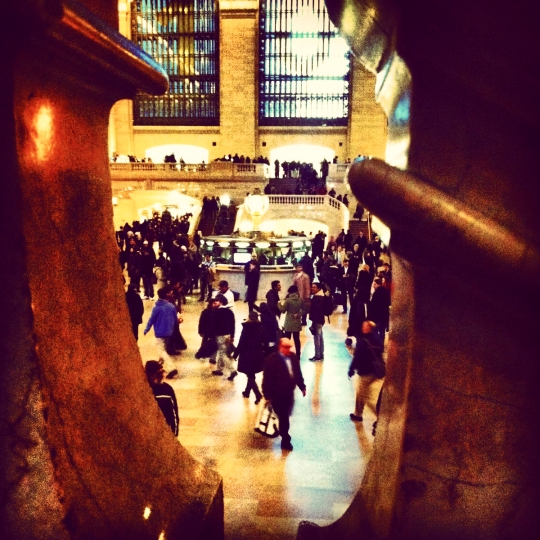
Corporations are just as concerned with self-preservation as the individual and so we dazzle the viewer with the latest and greatest, hoping to further fuel the growing lust for inanimate things. As a woman I can say that I personally need only the flimsiest excuse: “its raining” or “its a Tuesday” will often suffice. But for those who need more of a nudge, there is a billion dollar industry for that, showing them all the things they never realized they always wanted.

And while trends can have far reaching influence, they are not spontaneously democratic. They can dovetail with an outgoing fad, soaring on a second or third wind, or build its momentum from grassier roots. If it is the latter, then there is the hundredth monkey effect to consider.
FROM WIKIPEDIA
The hundredth monkey effect is a supposed phenomenon in which a behavior or thought spreads rapidly from one group to all related groups once a critical number of initiates is reached. By generalization it means the instantaneous spreading of an idea or ability to the remainder of a population once a certain portion of that population has heard of the new idea or learned the new ability by some unknown process currently beyond the scope of science.
One could argue that the taste-makers have only but so far to push before critical mass takes over to do the bulk of the work. If this phenomenon is to be believed, does that mean our individuality is nothing more than an elaborate ruse? Are we actually the wayward limbs of some grand and often times self-flagellating organism?

Source: http://commons.wikimedia.org/wiki/File:Ouroboros_on_a_cemetery_door.jpg
And while the mainstream can come across as an overwhelming and unstoppable force, trends are precarious by nature. They have a trajectory, an arc with only one possible conclusion and once the zenith is reached, it is only a matter of time before the free-fall gets its due. It happens when the air is suddenly so saturated that it must then be purged. It is strange to watch something so trendy, so high off its own popularity and then forced to succumb to its own terrible death throes. We have all seen it, participated in brief flashes of consumer driven hysteria. Consider every boy-band that ever sung its way into the hearts of tween girls, confusing a budding adolescence with hair products and synchronized routines. Perhaps the point is not the trend itself, but the inevitability that it will change. In “If On a Winter’s Night a Traveler,” Italo Calvino pontificates on life, death and that what drives our need to share stories.
“In ancient times a story could end only in two ways: having passed all the tests, the hero and the heroine married, or else they died. The ultimate meaning to which all stories refer has two faces: the continuity of life, the inevitability of death.”
And so trends are life cycles happening at an escalated rate. It forces the question as to what would happen if we re-visioned our belief systems with the same frequency as our wardrobes. If our collective obsession with trends can teach us anything, then perhaps it exposes a thirst for change that has only been usurped by the marketplace and is not native to it. And while I am painfully aware of the fleeting nature of the zeitgeist and its myriad of pitfalls, the realization offers only momentary relief before I am swept away once again by its ever-changing edicts. Not only is it my job to know the exact moment when exposed zippers go from being chic to passe, it is the pursuit of creative innovation that excites me the most. So if you are likewise trapped and care more than you reasonably should about the trends being pushed, prodded and touted for Spring 2013, then congratulations pilgrim, your search is through!
Author : Ashley Rabin
*
TREND REPORT
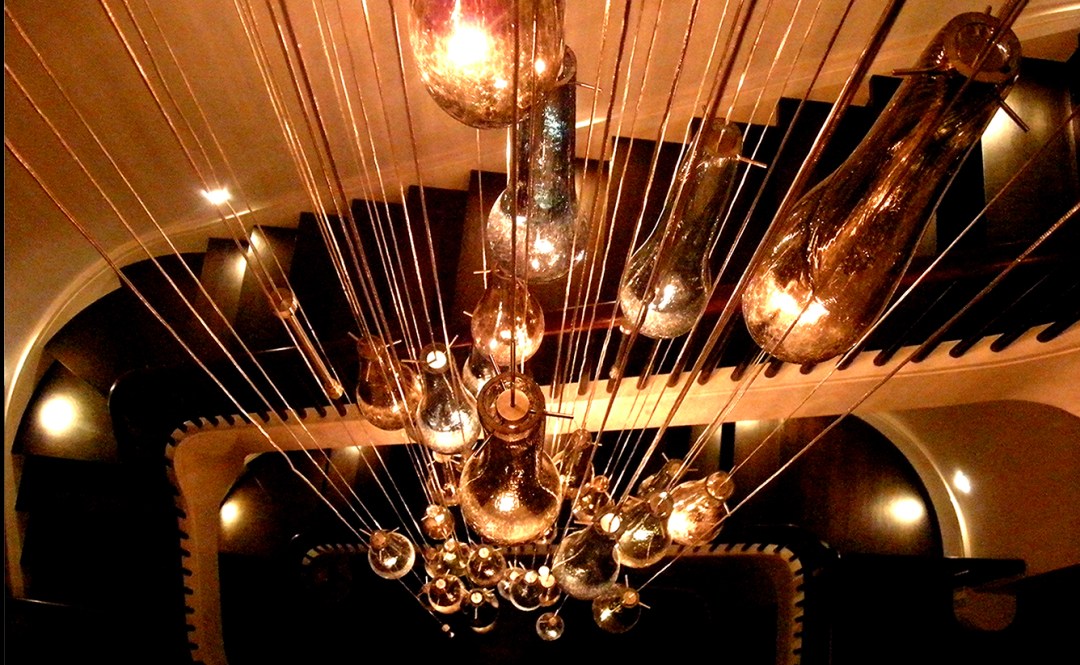
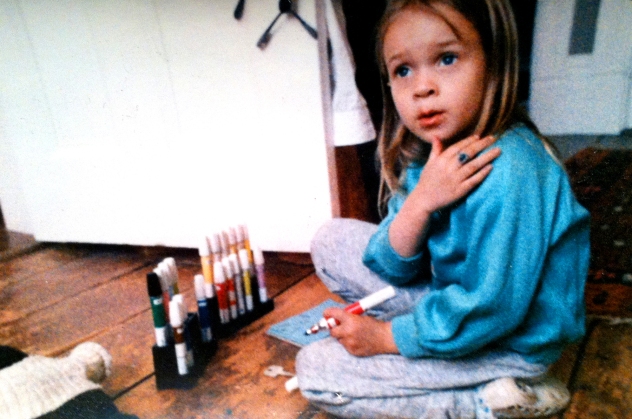
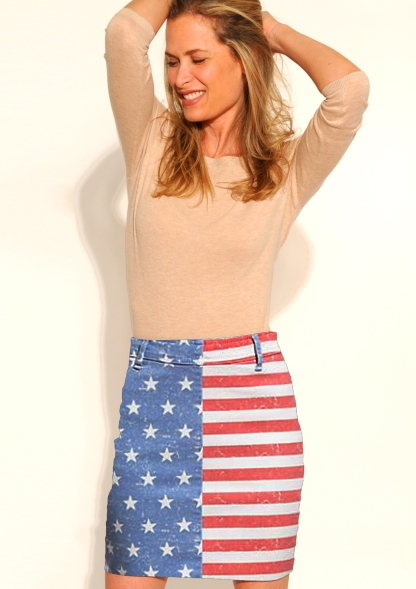
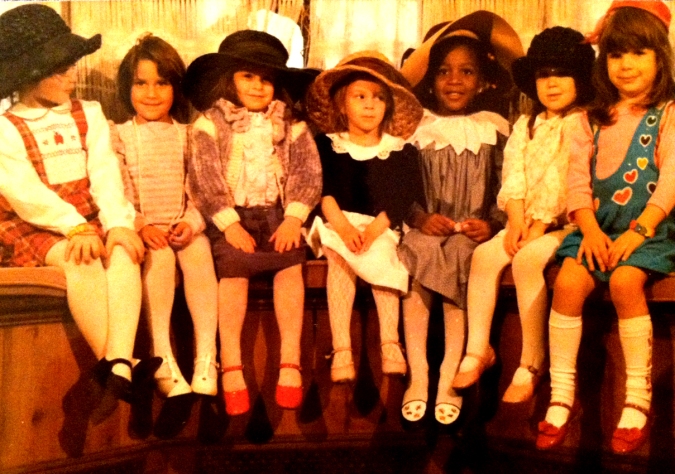

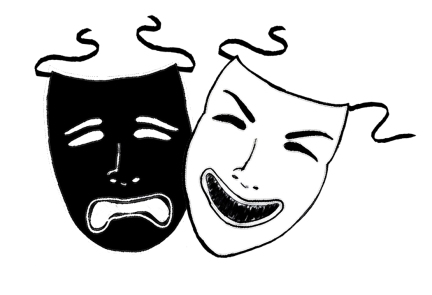
bravo, bravo, bravo
you are a novelist and a sage.
LikeLike
Brilliant!
LikeLike
I am impressed at how you seamlessly merge your love of literature with design.
LikeLike
I agree with your comments on Authenticity, citing Fountainhead’s Howard Roark reminds me of the core element creatives are striving for within Industrial / Interaction Design…essential expression. As advances in technology shrink physical objects, these artifacts will become “background”, the foreground then becomes the UX. The end to end user experience then becomes the authentic, product expression transcending physical ornament.
Great discussion on design in your essay, especially how you are intertwining it with literature.
LikeLike